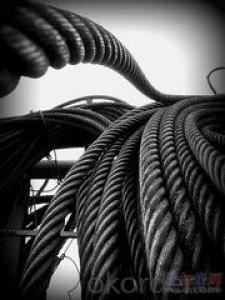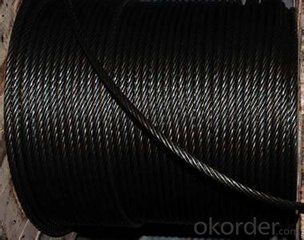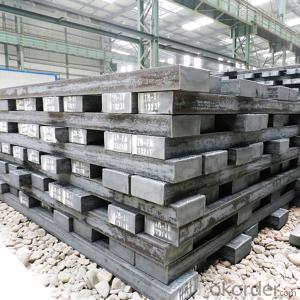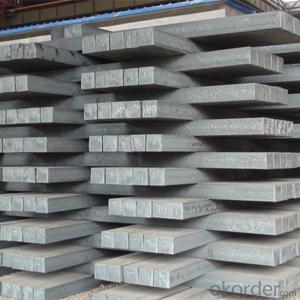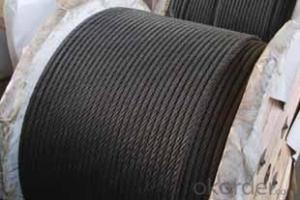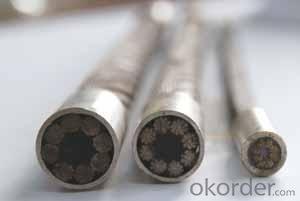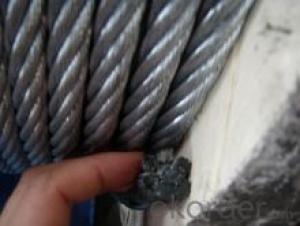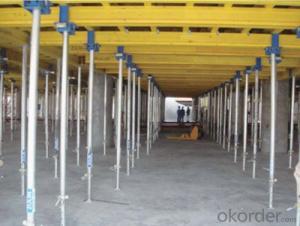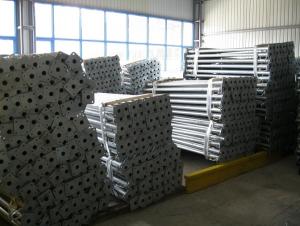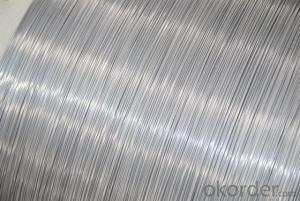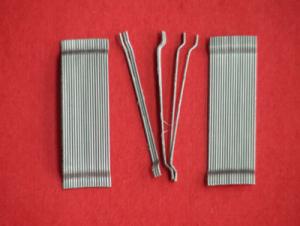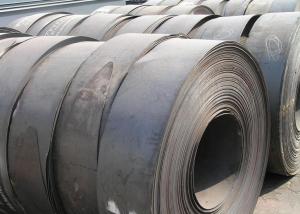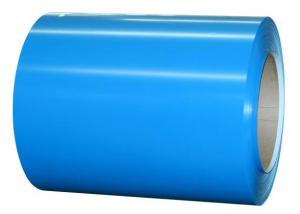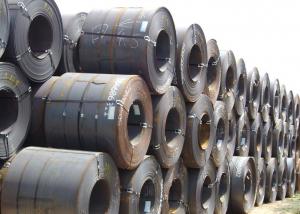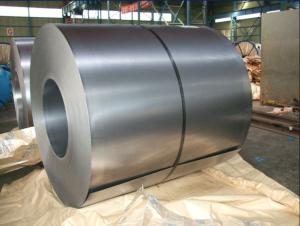STEEL WIRE ROPE FOR LIFTING
- Loading Port:
- China Main Port
- Payment Terms:
- TT OR LC
- Min Order Qty:
- -
- Supply Capability:
- -
OKorder Service Pledge
Quality Product, Order Online Tracking, Timely Delivery
OKorder Financial Service
Credit Rating, Credit Services, Credit Purchasing
You Might Also Like
- Q: What is the role of steel in earthquake-resistant building design?
- The role of steel in earthquake-resistant building design is crucial as it provides strength, flexibility, and ductility to withstand and absorb the energy generated during an earthquake. Steel is used to reinforce concrete structures, such as beams, columns, and foundations, enhancing their ability to resist seismic forces. Additionally, steel frames and braces are often employed to create a more resilient and stable building system that can better withstand the lateral forces exerted by earthquakes.
- Q: What are the different types of steel valves and their uses?
- There are several types of steel valves, including gate valves, globe valves, ball valves, butterfly valves, and check valves. Gate valves are used to control the flow of fluids by either fully opening or fully closing the valve. Globe valves are designed for regulating flow and are commonly used in industries where precise control is required. Ball valves have a spherical disc that controls the flow and are suitable for high-pressure applications. Butterfly valves have a disc that rotates to control the flow and are commonly used in large-scale systems. Check valves allow the flow of fluid in one direction and prevent backflow. The specific type of steel valve used depends on the application and the requirements of the system.
- Q: What are the common uses of steel pipes and tubes?
- Steel pipes and tubes have a wide range of common uses in various industries. Some of the common applications include transportation of fluids and gases in plumbing systems, infrastructure projects such as water supply and sewage systems, oil and gas pipelines, construction and structural purposes, manufacturing of machinery and equipment, and even in the automotive industry for exhaust systems.
- Q: What are the common uses of steel angles?
- Steel angles are commonly used in construction and engineering applications. They are often used as structural supports, providing stability and strength to various structures such as buildings, bridges, and towers. Steel angles are also used in the fabrication of frames, brackets, and reinforcements for machinery and equipment. Additionally, they are frequently utilized in the manufacturing of furniture, shelving units, and other metal-based products.
- Q: What are the different grades of steel and their applications?
- There are several grades of steel, each with its own unique properties and applications. Some common grades include mild steel, which is a versatile and widely used grade for general construction and fabrication purposes; stainless steel, known for its corrosion resistance and used in kitchen appliances, medical equipment, and chemical processing; high carbon steel, used for making cutting tools and machinery parts that require high strength; and alloy steel, which contains various elements to enhance its strength, durability, and heat resistance, commonly used in automotive and aerospace industries. These are just a few examples, and there are many more grades of steel available, each tailored for specific applications based on their composition and properties.
- Q: What are the different types of steel tanks and their applications in the food processing industry?
- There are several types of steel tanks used in the food processing industry. Some common ones include stainless steel tanks, carbon steel tanks, and alloy steel tanks. Stainless steel tanks are highly preferred due to their corrosion resistance and hygienic properties. They are suitable for storing and processing various food products such as dairy, beverages, and sauces. Carbon steel tanks, on the other hand, are cost-effective and durable but require proper coating to prevent corrosion. They are commonly used for bulk storage of dry food ingredients like grains, flour, and sugar. Alloy steel tanks offer enhanced strength and resistance to high temperatures. They are often utilized in food processing operations that involve heat treatment, such as cooking, sterilization, and pasteurization. Overall, the choice of steel tank depends on the specific requirements of the food processing industry, including the type of food being processed, storage capacity, and the necessary sanitary standards.
- Q: What are the different types of steel meshes and their applications?
- There are several different types of steel meshes with various applications. Some common types include welded wire mesh, expanded metal mesh, and woven wire mesh. Welded wire mesh is frequently used in construction, agriculture, and fencing due to its strength and durability. Expanded metal mesh is often utilized for grating, walkways, and filters due to its high load-bearing capacity and ventilation properties. Woven wire mesh is commonly used in industries such as mining, filtration, and security due to its versatility and ability to withstand heavy-duty applications. Overall, steel meshes serve diverse purposes and are chosen based on their specific properties and intended applications.
- Q: How do steel products contribute to the water and wastewater treatment sector?
- Steel products play a crucial role in the water and wastewater treatment sector. They are used for constructing various infrastructure components such as pipelines, tanks, and treatment systems. Steel's durability, strength, and resistance to corrosion make it an ideal material for these applications. Additionally, steel products can be customized to meet specific requirements, ensuring efficient and reliable water and wastewater treatment processes.
- Q: What are the different types of steel wire ropes and their uses in marine applications?
- There are several types of steel wire ropes commonly used in marine applications. The most commonly used types include galvanized wire ropes, stainless steel wire ropes, and plastic-coated wire ropes. Galvanized wire ropes are coated with a layer of zinc, which provides corrosion resistance. These ropes are commonly used in marine applications because they can withstand harsh weather conditions and saltwater environments. They are used for various purposes such as mooring lines, anchor lines, and towing lines. Stainless steel wire ropes are highly resistant to corrosion, making them ideal for marine applications. They are commonly used in tasks that require strength, durability, and resistance to harsh conditions. Stainless steel wire ropes are used for applications such as lifting heavy loads, rigging, and shipbuilding. Plastic-coated wire ropes have a layer of plastic coating that provides additional protection against corrosion. These ropes are commonly used in marine applications where there is a need for increased flexibility, reduced friction, and protection against damage. They are often used in tasks such as fishing, yacht rigging, and sailboat rigging. Overall, the different types of steel wire ropes offer varying degrees of corrosion resistance, strength, and flexibility, making them suitable for different marine applications.
- Q: What are the different types of steel coatings?
- There are several types of steel coatings available, including galvanized, aluminized, zinc-nickel, epoxy, polyurethane, and polyvinylidene fluoride (PVDF) coatings. Each type offers unique properties and benefits, such as enhanced corrosion resistance, improved durability, and increased aesthetic appeal. The choice of coating depends on the specific application and desired outcome.
Send your message to us
STEEL WIRE ROPE FOR LIFTING
- Loading Port:
- China Main Port
- Payment Terms:
- TT OR LC
- Min Order Qty:
- -
- Supply Capability:
- -
OKorder Service Pledge
Quality Product, Order Online Tracking, Timely Delivery
OKorder Financial Service
Credit Rating, Credit Services, Credit Purchasing
Similar products
Hot products
Hot Searches
Related keywords
